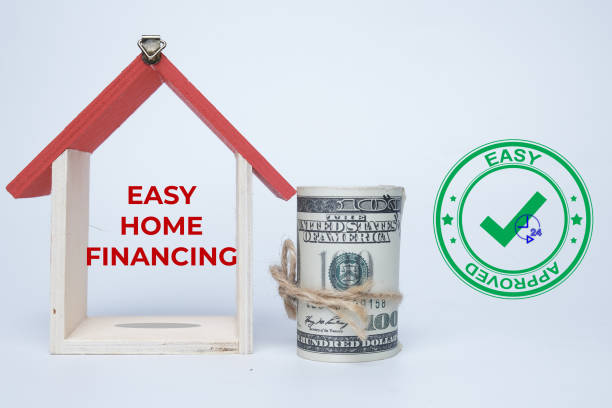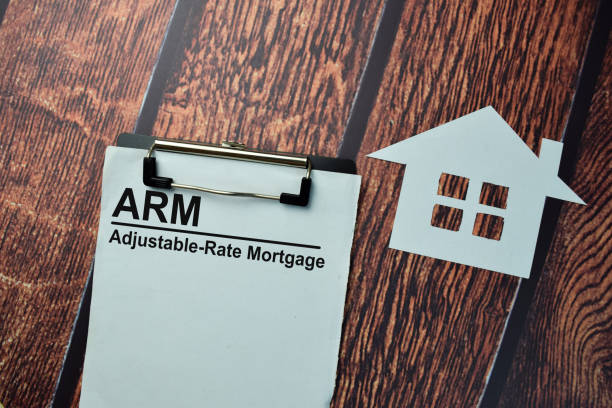When financing a home purchase, most buyers face the choice between a fixed-rate mortgage and an adjustable-rate mortgage (ARM). While fixed-rate mortgages offer consistent payments, adjustable-rate mortgages come with variable interest rates that can fluctuate over time. ARMs can be an attractive option for some buyers due to their lower initial rates, but they also carry risks that may not be suitable for everyone. Understanding the pros and cons of ARMs can help you make an informed decision about whether this mortgage type is right for you.
What is an Adjustable-Rate Mortgage (ARM)?
An adjustable-rate mortgage (ARM) is a type of home loan where the interest rate adjusts periodically based on a specific index, which can lead to changes in monthly payments over time. ARMs typically begin with a fixed rate for an initial period, after which the rate adjusts at regular intervals. Common types of ARMs include 5/1, 7/1, or 10/1 ARMs, where the first number represents the number of years the initial rate is fixed, and the second number represents how often the rate will adjust afterward (typically annually).
How Adjustable-Rate Mortgages Work
- Initial Fixed Period: ARMs start with a fixed interest rate for a set period (e.g., 5, 7, or 10 years). During this time, the rate remains constant, which often results in lower initial payments compared to a fixed-rate mortgage.
- Adjustment Period: After the fixed-rate period ends, the interest rate adjusts based on an index, such as the LIBOR (London Interbank Offered Rate) or SOFR (Secured Overnight Financing Rate), plus a margin set by the lender.
- Rate Caps: Most ARMs have rate caps, which limit how much the interest rate can increase or decrease during each adjustment and over the life of the loan, providing some level of protection for borrowers.
The Pros of Adjustable-Rate Mortgages (ARMs)
ARMs can offer several benefits, especially for borrowers with specific financial plans or those who want to maximize short-term savings.
1. Lower Initial Interest Rates
One of the primary advantages of an ARM is its lower initial interest rate compared to a fixed-rate mortgage. This introductory rate, often referred to as the “teaser rate,” can last anywhere from 5 to 10 years, depending on the ARM type. For borrowers planning to sell the home or refinance before the adjustment period begins, an ARM can result in substantial interest savings and lower monthly payments.
2. Lower Monthly Payments During Initial Period
The lower initial rate translates to lower monthly payments during the fixed period, making an ARM attractive to buyers looking for affordable payments in the early years of the loan. Lower payments can free up funds for other financial goals, such as paying down debt, saving for future expenses, or investing. This feature is particularly appealing for younger buyers or those in high-cost areas who want to afford a home without committing to higher monthly payments initially.
3. Potential for Rate Decreases
While rates can go up, they can also go down. If the index to which the ARM is tied decreases, borrowers could enjoy lower monthly payments after the initial period. This can be beneficial in a declining interest rate environment, allowing homeowners to benefit from reduced payments without the need to refinance.
4. Flexibility for Short-Term Homeowners
ARMs can be an excellent option for buyers who plan to stay in their homes for a limited time, such as 5 to 10 years. For example, if you know you’ll be relocating for work, upgrading to a larger home, or downsizing, an ARM allows you to take advantage of lower payments during your time in the home without the risk of higher payments in the long term.
5. May Qualify for a Larger Loan Amount
With a lower initial interest rate, borrowers may qualify for a larger loan amount with an ARM compared to a fixed-rate mortgage. This can be beneficial if you’re looking to buy in a higher price range or need extra funds to cover other financial goals.
The Cons of Adjustable-Rate Mortgages (ARMs)
Despite the potential benefits, ARMs come with risks and downsides that may not be suitable for every borrower.
1. Interest Rate Uncertainty
The biggest drawback of an ARM is the potential for rate increases after the initial fixed period. Once the rate adjusts, monthly payments can increase significantly, making it challenging to budget or plan for the long term. If interest rates rise sharply, borrowers could face substantial payment increases, leading to financial strain. This uncertainty can be a disadvantage for those who prefer predictable payments and a stable financial outlook.
2. Higher Payments After the Fixed Period
Once the initial rate period ends, your payments are subject to change based on market rates, which could lead to higher monthly payments. If you’re unable to sell, refinance, or handle the increased payments, an ARM could pose a financial risk. Borrowers need to be prepared for the possibility of higher payments and ensure they have the financial flexibility to handle such changes.
3. Rate Caps Can Still Lead to Large Increases
While rate caps are designed to protect borrowers from excessive increases, they don’t prevent significant jumps in monthly payments. Even with caps, rates can rise considerably over time, especially in an environment of rising interest rates. For example, a cap that allows a 2% increase at each adjustment could add hundreds of dollars to your payment over time, depending on the loan balance.
4. Refinancing Risks
Many borrowers with ARMs plan to refinance before the adjustment period begins. However, refinancing is not guaranteed. If home values drop, or if your financial situation changes (e.g., lower credit score or income loss), refinancing may not be possible or could be costlier than expected. This leaves borrowers exposed to the potential of higher payments if they’re unable to refinance as planned.
5. Not Ideal for Long-Term Homeowners
For borrowers planning to stay in their homes long-term, an ARM may not be the best option. Over the life of the loan, a fixed-rate mortgage generally provides more predictability and stability, making it easier to plan for other financial goals. ARMs can lead to considerable stress in the long term due to the risk of rate increases, which could make your home less affordable.
Is an ARM Right for You?
Determining whether an ARM is right for you depends on your financial goals, risk tolerance, and the amount of time you plan to stay in the home. Here are some scenarios where an ARM might be a good fit:
- Short-Term Homeownership: If you plan to move within the next 5 to 10 years, an ARM’s lower initial rate can offer significant savings during your time in the home.
- Expecting Income Growth: If you expect your income to increase in the coming years, you may be better equipped to handle potential rate increases.
- High Interest Rate Environments: In high-rate markets, an ARM may allow you to benefit from lower initial payments while potentially refinancing to a fixed-rate loan if rates drop.
Conversely, a fixed-rate mortgage may be better if you want stability, expect to stay in the home long-term, or prefer to avoid the risk of rising payments.
Final Thoughts
Adjustable-rate mortgages offer both advantages and risks, with lower initial rates providing short-term savings at the potential cost of future rate uncertainty. For some borrowers, ARMs offer flexibility and affordability, particularly if they don’t plan to stay in their home long-term. However, for those who value stability or plan to keep their home long-term, a fixed-rate mortgage may provide greater peace of mind.
If you’re considering an ARM, assess your financial situation, future plans, and risk tolerance carefully. Consulting with a mortgage professional can help you evaluate whether an ARM aligns with your financial goals and housing timeline. With the right strategy, you can choose the mortgage that best fits your needs and helps you make the most of your homeownership journey.

